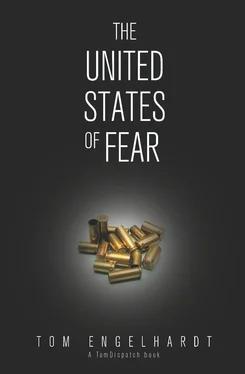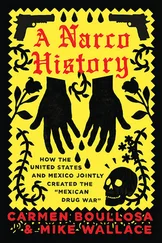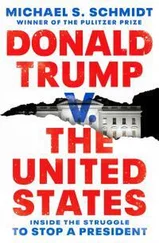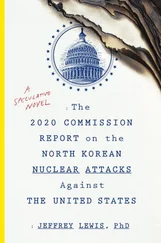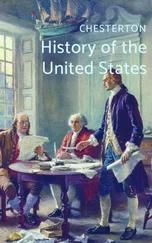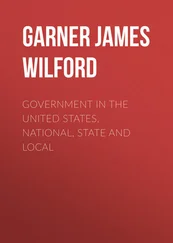In a sense, after 9/11, bin Laden commanded Washington by taking possession of its deepest fears and desires and turning them to his own ends, the way a bot takes over a computer. It was he who ensured that the invasion and occupation of Afghanistan would be put into motion. It was he who also ensured that the invasion and occupation of Iraq would be launched. It was he who brought America’s Afghan War to Pakistan, and American aircraft, bombs, and missiles to Somalia and Yemen to fight that Global War on Terror. And for the last near-decade, he did all this the way a Tai Chi master fights: using not his own minimal strength but our massive destructive power to create the sort of mayhem in which he undoubtedly imagined that an organization like his could thrive.
Don’t be surprised, then, that prior to his death, bin Laden seems to have been sequestered in a walled compound in a resort area just north of the Pakistani capital, Islamabad, doing next to nothing. Think of him as practicing the Tao of Terrorism. And the less he did, the fewer operations he was capable of launching, the more the American military did for him in creating what collapsing Chinese dynasties used to call “chaos under heaven.”
As is now obvious, bin Laden’s greatest wizardry was performed on us, not on the Arab world, where the movements he spawned from Yemen to North Africa have proven remarkably peripheral and unimportant. He helped open us up to all the nightmares we could visit upon ourselves (and others). In many ways, he broke us not on 9/11 but in the months and years thereafter. As a result, if we don’t have the sense to follow Senator Aiken’s advice, the wars we continue to fight with disastrous results will prove to be bin Laden’s monument, and our imperial graveyard.
Now that the celebrations and partying over his death have long faded, we are once again left with the tattered American world bin Laden willed us, and it’s easier to see just how paltry a thing this “victory” of his killing was. For all the print devoted to the operation that took him out, all the hosannas lavished on American Special Ops forces, the president, his planners, and various intelligence outfits, this was hardly a glorious American moment. If anything, we should probably be in mourning for what we buried long before we had bin Laden’s body, for what we allowed him (and our own imperial greed) to goad us into doing to ourselves, and what, in the course of so doing, we did, in the name of fighting him, to others.
Those chants of “U-S-A! U-S-A!” on the announcement of his death were but faint echoes of the ones at Ground Zero on September 14, 2001, when President George W. Bush picked up a bullhorn and promised “the people who knocked these buildings down will hear all of us soon!” That would be the beginning of a brief few years of soaring American hubris and fantasies of domination wilder than those of any caliphate-obsessed Islamic fundamentalist terrorist, and soon enough they would leave us high and dry in our present world.
Unless we set aside the special ops assaults and the drone wars and take a chance, unless we’re willing to follow the example of all those nonviolent demonstrators across the Greater Middle East and begin a genuine and speedy withdrawal from the Af-Pak theater of operations, Osama bin Laden will never die.
On September 17, 2001, President Bush was asked whether he wanted bin Laden dead. He replied: “There’s an old poster out West, as I recall, that said ‘wanted dead or alive.’” Dead or alive. Now, it turns out that there was a third option. Dead and alive.
The chance exists to put a stake through the heart of Osama bin Laden’s legacy. After all, the man who officially started it all is gone. We could declare victory, Toto, and head for home. But why do I think that, on this score, the malign wizard is likely to win?
As we watched the dramatic events of the Arab Spring of 2011 in the Middle East, you would hardly have known that we had a thing to do with them. Oh, yes, in the name of its War on Terror, Washington had for years backed most of the thuggish governments that were under siege. When it came to Egypt in particular, there was initially much polite (and hypocritical) discussion in the media about how our “interests” and our “values” were in conflict, about how far the United States should back off its support for the regime of Egyptian autocrat Hosni Mubarak, and about what a “tightrope” the Obama administration was walking. While the president and his officials flailed, the mildest of questions were raised about how much we should chide our erstwhile allies, or encourage the massed protestors, and about whether we should “take sides” (as though we hadn’t done so decisively in the previous decades).
With popular cries for “democracy” and “freedom” sweeping the Middle East, it’s curious to note that the Bush-era’s now-infamous “democracy agenda” has been nowhere in sight. In its brief and disastrous life, it was used as a battering ram for regimes Washington loathed and offered as a soft pillow of future possibility to those it loved.
Still, there’s a story in a Washington stunned and “blindsided,” in an administration visibly toothless and in disarray as well as dismayed over the loss of its Egyptian ally, “the keystone of its Middle Eastern policy,” that’s so big it should knock your socks off: Almost twenty years after the lesser superpower of the Cold War left the world stage, the “victor” is now lurching down the declinist slope. So don’t mark the end of the Cold War in 1991 as our conventional histories do. Mark it in the early days of 2011, which served as a symbolic goodbye-to-all-that for the planet’s “sole superpower.”
The proximate cause of Washington’s defeat is a collapse of its imperial position in a region that, ever since President Jimmy Carter proclaimed his Carter Doctrine in 1980, has been considered the crucible of global power. Today, “people power” has shaken the pillars of that American position in the Middle East, while—despite the staggering levels of military might the Pentagon still has embedded in the area—the Obama administration has found itself standing by helplessly and in grim confusion.
As a spectacle of imperial power on the decline, we haven’t seen anything like it since 1989 when the Berlin Wall came down. Then, too, people power stunned the world. It swept like lightning across the satellite states of Eastern Europe, those “pillars” of the old Soviet Empire, most of which had (like the Middle East) seemed quiescent for years. It was an invigorating time. After all, such moments often don’t come once in a life, no less twice in twenty years. If you don’t happen to live in Washington, the Arab Spring is proving no less remarkable, unpredictable, and earthshaking than its predecessor.
What we’re dealing with is, in a sense, the story of two “abroads.” In 1990, in the wake of a disastrous war in Afghanistan, in the midst of a people’s revolt, the Russians lost what they came to call their “near abroad,” the lands from Eastern Europe to Central Asia that had made up the Soviet Empire. The United States had something the Soviets never possessed. Call it a “far abroad.” Now, in the midst of another draining, disastrous Afghan War, in the face of another people’s revolt, a critical part of its far abroad is being shaken to its core.
In the Middle East, the two pillars of American imperial power and control have long been Egypt and Saudi Arabia—along, of course, with obdurate Israel and little Jordan. In previous eras, the chosen bulwarks of “stability” and “moderation,” terms much favored in Washington, had been the shah of Iran in the 1960s and 1970s (and you remember his fate), and Saddam Hussein in the 1980s (and you remember his, too). In the larger region the Bush administration liked to call “the Greater Middle East” or “the arc of instability,” another key pillar has been Pakistan, a country now in destabilization mode under the pressure of a disastrous American war in Afghanistan.
Читать дальше
